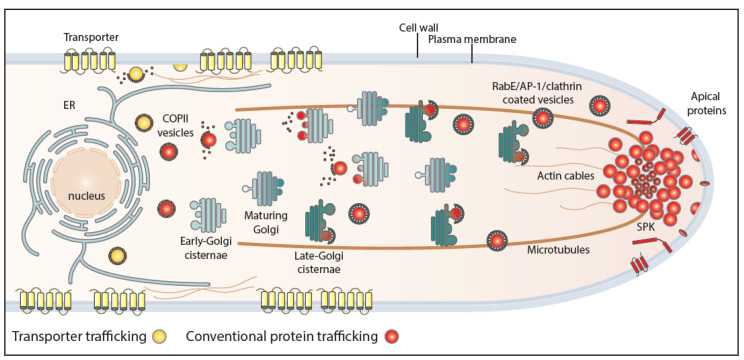Figure 2.
Conventional and transporter-related trafficking routes. Schematic depiction of the distinct trafficking routes of transporters and apical membrane proteins in A. nidulans. Apical cargoes are polarly secreted to the plasma membrane (PM) through the conventional pathway. Briefly, they exit the endoplasmic reticulum (ER) in COPII vesicles, which fuse with early Golgi cisternae after uncoating and pass via Golgi maturation to late-Golgi cisternae. From there, apical cargoes get packed in AP-1/clathrin-coated vesicles with the recruitment of the small GTPase RabE and move along microtubules towards the Spitzenkörper (SPK). The final step of this pathway involves fusion to the PM via the exocyst complex. Transporters are sorted to the PM via a distinct non-polar pathway that bypasses the Golgi and does not necessitate Rab GTPases, AP adaptors, or microtubules. This route requires functional COPII vesicles, actin network, and the PM t-SNARE SsoA, without excluding the existence of an ER-to-PM intermediate compartment [20].

